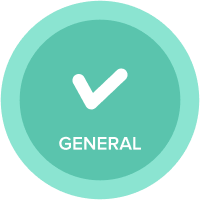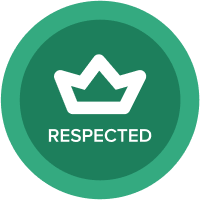Anaplan in the Classroom Paves the Way for Future Connected Planning Practices

 Professor Kaushik Ghatak is teaching the business value of IT and supply chain management to graduate and undergraduate students at the Singapore Management University (SMU) Business School. He is using the Anaplan Connected Planning platform in the classroom, through Anaplan’s University Connect program, to help inspire and educate the next generation of leading supply chain professionals. I sat down with Professor Ghatak to learn more.
Professor Kaushik Ghatak is teaching the business value of IT and supply chain management to graduate and undergraduate students at the Singapore Management University (SMU) Business School. He is using the Anaplan Connected Planning platform in the classroom, through Anaplan’s University Connect program, to help inspire and educate the next generation of leading supply chain professionals. I sat down with Professor Ghatak to learn more.
![Kaushik - Formal Photo[1].png Kaushik - Formal Photo[1].png](https://us.v-cdn.net/6037036/img/Kaushik_-_Formal_Photo[1]_81286.png) Professor Ghatak, you have been using the Anaplan platform for two years at SMU to teach sales and operations planning. Could you share your experience?
Professor Ghatak, you have been using the Anaplan platform for two years at SMU to teach sales and operations planning. Could you share your experience?
One thing my students have really appreciated is that they cannot do any kind of planning without the right technology tools. That has become very clear to them. Before the course with Anaplan, my students learned different steps of sales and operations planning (S&OP), each in their own silo. They’ve learned forecasting, statistical models, and inventory planning almost on a standalone basis. My course brings together these principles within the context of developing an integrated business plan. I use a simple model, but when the students start working on it, they discover the inherent complexity. And they discover rapidly that it’s not possible to run it on a spreadsheet.
How is your course set up?
It’s a sales and operation planning course for undergraduate students who don't have much real-life execution experience or planning experience.
At the beginning of the course, I get them to play a simulation game called The Fresh Connection. It's a really nice game to understand how it feels to manage parts of a supply chain and the entire supply chain together, as a team. It allows me to bring out the principles of trade-offs and the importance of planning aligned with strategy.
Then, I help them understand S&OP steps in terms of data gathering, so they can discover where the planning data is coming from. The next step for them is to understand demand planning and at what level they should do their forecast, with hierarchies or geography in mind. From demand planning, we move on to supply planning principles and methodologies and tie it back to the simulation game to understand aggregate planning.
What case study do you use?
I am using a fictitious automotive company that manufactures only four models of cars and serves four regions—East, West, North, and South in the USA. With the help of Anaplan, I give the students roles as a demand planning manager for East, West, North, and South regions, with stress conditions such as a dealer going out of business. After that, someone taking the role of the sales director for all regions evaluates the demand plans to see how best he/she can meet the sales target.
Then, I help the students think through the supply side with two manufacturing options—one in Detroit and one in Japan. It allows us to consider different time zones, different costs, different suppliers. They realize quickly that their demand plan can be made only when their supply plan matches it.
What are your student's key learnings?
By getting experience using the Anaplan platform in the classroom, my students can apply the concept of Connected Planning to the case and learn the value of an integrated business plan. It makes them understand the value of not planning in silos. As planning should always be connected, by definition, my students understand that if they have to run a business, they need to plan for it, and they need to plan for different connected parts.
Another key learning is to keep focusing on customer alignment and to develop their supply chain plan accordingly. The course really helps them to appreciate a reality that they don't relate to, but one they'll soon have to master.
More From University Connect:
- Announcing the 2020 Student Anaplanner of the Year
- University Connect—Cal Poly: Senior Project Success
What have your students learned about COVID-19 and supply chain disruption?
S&OP is a monthly process, and COVID-19 was a completely unprecedented situation that was changing every day. You can't possibly depend on a monthly process to resolve issues arising at such velocity. You need to have a risk management framework and a crisis management plan.
At the same time, one of the ways for companies to survive such a crisis is their ability to react to changes in demand, supply, and even people's availability.
Another learning for the students is that they have to look at the data and at the process.
Based on the consulting that you do, do you think that the supply chain is being elevated into a boardroom discussion?
Definitively. Before becoming CEOs, the leaders of Apple and GM managed the supply chain of their respective businesses. Since 2000, since the start of the globalization of supply chain and of outsourcing, executive leadership teams have realized that having control of the value chain is really important.
Thank you to Professor Ghatak for sharing your valuable insight with the Community. Want to learn more about the benefits of the University Connect program and planning in the classroom? Let us know in the comments below.
Comments
-
Such great news! It takes the power of Connected Planning with Anaplan to manage all of the facets of Supply Chain. I'm sure other institutions of higher ed will soon add Anaplan to their curriculum, as well.
2 -
Thanks for sharing Singapore Management University experience using Anaplan in the classroom. I hope it inspires additional universities to partner with Anaplan. There is huge value in giving students a real-life perspective and experience in the classroom.
My favorite phrase in the blog is "The course really helps them to appreciate a reality that they don't relate to, but one they'll soon have to master."
If anyone reading this blog would like to learn how their university can participate in University Connect I would be happy to explore the topic; if you are with a customer or partner organization I'm also happy to discuss how you can get engaged with universities like SMU / bring your "go to" university partners into our program.
0




